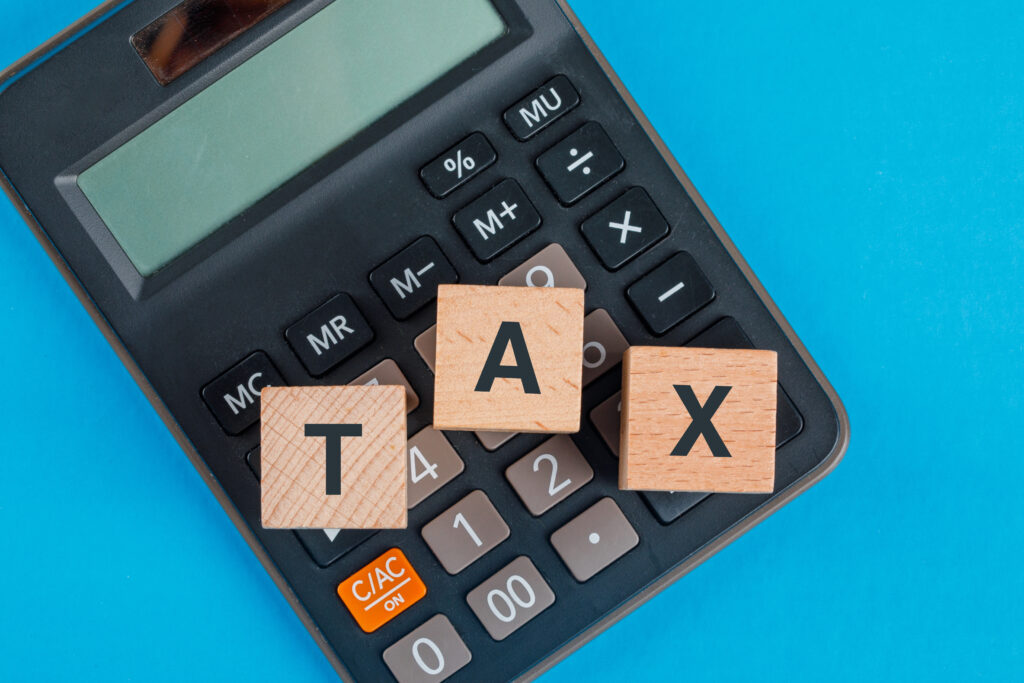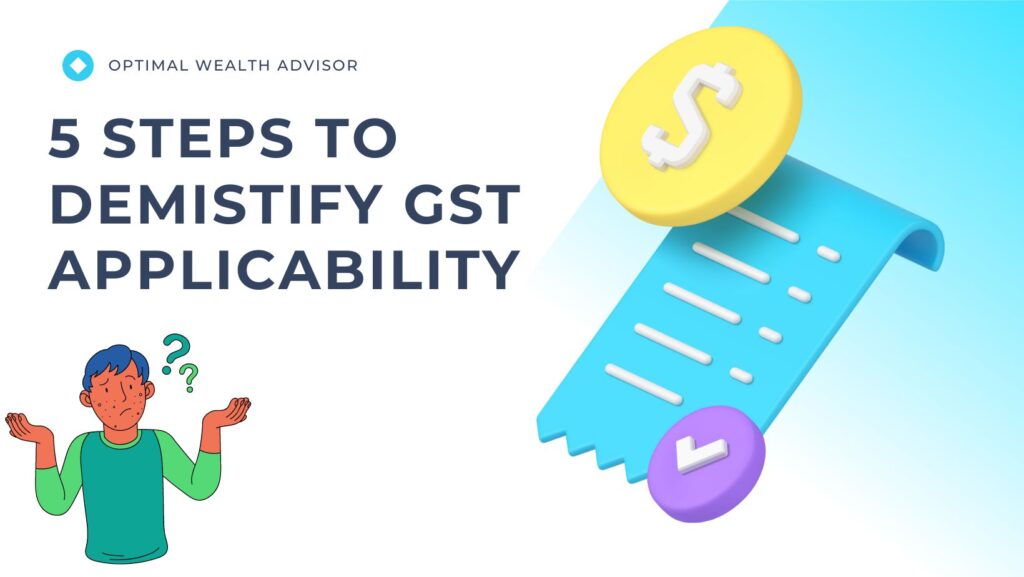Navigating the world of GST can feel like navigating an uncharted map, especially when determining its applicability to your business. Fear not, fellow entrepreneurs! This guide presents a simplified approach to GST applicability in 5 easy-to-follow steps, empowering you to confidently assess your business’s GST requirements.

Table of Contents
Step 1 of GST Applicability: Assess Your Turnover Threshold
The first checkpoint is understanding the turnover threshold, which is the annual revenue limit above which GST registration becomes mandatory. In most states, this threshold sits at ₹40 lakh. However, for special category states like Jammu & Kashmir, Himachal Pradesh, Uttarakhand, and the North-Eastern states, the limit is ₹10 lakh.
Step 2 of GST Applicability: Identify the Nature of Your Supply
Next, pinpoint the nature of your business activity. Do you primarily sell goods (like clothing) or provide services (like web development)? Understanding this distinction is crucial, as it plays a role in determining GST applicability.
Step 3 of GST Applicability: Consider the Location of Supply and the Composition Scheme
The location of your supply, whether intra-state (within the same state) or inter-state (between different states), plays a part in GST applicability. This factor is particularly relevant for inter-state supplies, even for businesses below the threshold:
- Understanding the Composition Scheme: While businesses below the threshold are generally exempt from mandatory GST registration, there’s an exception for those making inter-state supplies. These businesses can opt for the composition scheme under Section 10 of the CGST Act, 2017, and SGST Act, 2017. This scheme offers a simplified tax compliance process with a lower tax rate, typically 1% for goods and 6% for services. However, there’s a turnover limit for opting for the composition scheme. In most states, this limit is ₹1 crore, while for special category states, it’s ₹50 lakh.
Why register under GST for inter-state supplies even below the threshold?
Even if your turnover falls below the threshold, registering under GST for inter-state supplies is crucial because:
- It allows you to collect and deposit tax on your inter-state sales, ensuring compliance with GST regulations.
- It enables you to claim input tax credit (ITC) on purchases made for your business, which can significantly reduce your overall tax liability.
- It eliminates the need for obtaining a registration certificate from each state you supply goods or services to, simplifying multi-state operations.
Step 4 of GST Applicability: Check for Exemptions and Non-Taxable Supplies
Certain goods and services are exempt from GST, meaning even if your turnover exceeds the threshold, registration might not be necessary. Examples include:
- Fresh fruits, vegetables, milk, and other agricultural produce (unprocessed) (Section 16(1)(a) of the IGST Act, 2017)
- Educational services provided by educational institutions (Section 17(5) of the IGST Act, 2017)
- Services provided by religious and charitable institutions (Section 17(5) of the IGST Act, 2017)
- Healthcare services provided by hospitals and clinics (Section 17(5) of the IGST Act, 2017)
Non-taxable supplies, on the other hand, are not subject to GST under any circumstance. These include:
- Sale of land and buildings (Section 9(1) of the IGST Act, 2017)
- Lottery tickets (Section 2(70) of the CGST Act, 2017)
Remember: This list is not exhaustive, and consulting the GST Act and relevant notifications is recommended for a complete understanding of exemptions and non-taxable supplies.
Step 5 of GST Applicability: Seek Professional Guidance (Optional)
While these steps offer a clear framework, navigating the complexities of GST can still involve nuanced situations. If you have any doubts or deal with intricate scenarios, seeking the guidance of a qualified tax professional is always recommended. They can provide a tailored assessment and ensure you meet all necessary GST compliance requirements.
Remember: This simplified guide serves as a starting point. Consulting the CBIC website or a tax professional can provide further insights and address specific questions you might have.
FAQs:
- Do I need to register for GST if I’m just starting a business?
You only need to register for GST if your projected annual turnover is likely to exceed the threshold limit.
- Even if my turnover is below the threshold, may I still choose to voluntarily register for GST?
Yes, you can opt for voluntary registration if you see benefits, such as claiming input tax credit (ITC).
- How can I find out if a specific good or service is exempt from GST?
You can refer to the GST Rate Schedule published by the Central Board of Indirect Taxes and Customs (CBIC) or consult a tax professional.
Key Takeaways:
- Understanding GST applicability is crucial for businesses and aspiring CAs.
- Turnover threshold, nature of supply, location of supply, and exemptions play a key role.
- Businesses below the threshold (except in special category states) are generally not liable for registration unless they choose the composition scheme for inter-state supplies.
- Special category states have a lower threshold of ₹10 lakh for mandatory registration.
- The composition scheme offers a simplified process for businesses below the prescribed turnover limit, but comes with limitations.
- Seeking professional guidance is recommended for complex scenarios or specific questions.
By following these steps and understanding the key takeaways, you can gain a clearer understanding of GST applicability for your business, enabling you to make informed decisions and ensure compliance with regulations. Remember, staying informed and compliant is essential for smooth business operations and avoiding potential penalties.
Do checkout our previous article on tax abatement.


Pingback: Residential Status: Master it by Reading here!